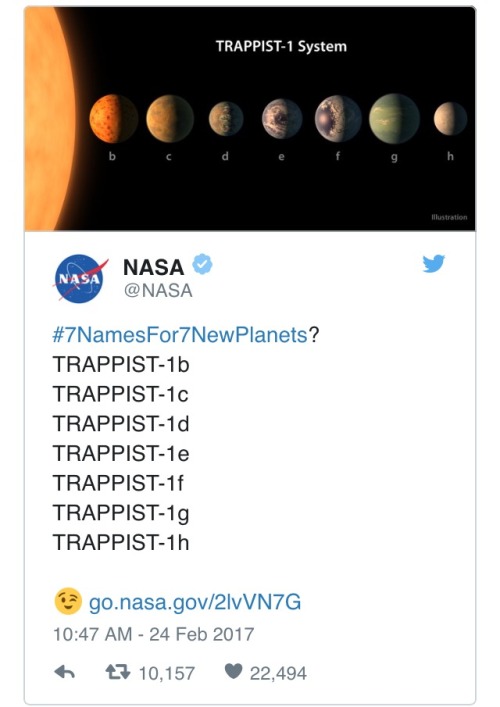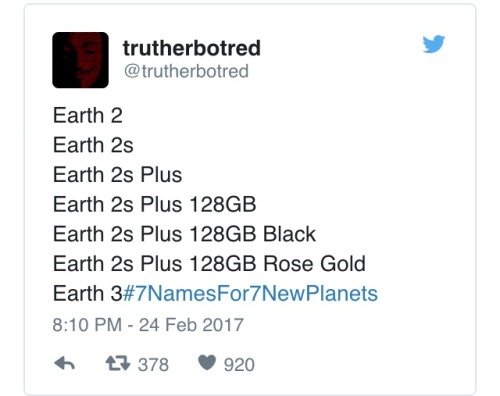Message From Pluto 8
message from pluto 8
tomorrow is the big day. #showyoursupport by putting the hashtags, #stopoppressingpluto and #letplutobeitself2k16 random places until people ask you politely to please stop. this has been a psa. pluto out.
More Posts from Plutoisnotaplanet and Others
Chocolate bar in Microwave (Part-II)
This diagram of the electromagnetic spectrum finds it place in all physics textbooks:

Source
But the problem was I never got a physical sense of what that meant. It remained ‘yet another physics diagram’ for a really long time.
You see, unlike sound which can be neatly visualized using Schlieren imagery


Source: NPR
or by other unconventional innovative means,

I had no idea how to even get started with electromagnetic waves.
Visualizing the microwave wavelength using a chocolate and an oven (although not my original idea) arose out of this need to understand microwaves a little better. (Check out part-I of this post)*

But you can do more with some better but less delicious equipment.
You can get a couple of neon bulbs from an electronics shop and place them in a grid inside the microwave to view the standing wave while the microwave is in action

Source
This tells you how the heat is distributed at the bottom of the microwave oven. The lit bulbs are anti-nodes and unlit ones are the nodes .
You can also try (NOT recommended) to do this by placing a light bulb inside a cup of water instead of a neon bulbs.


Better quality gif - here
As you can clearly see the bulb only lights up in the anti-node regions of the standing wave while the remaining regions are the nodes.
You can take this a step further if you have an infrared camera .
Mark Rober had this brilliant idea of using the infrared camera inside a microwave in order to ensure that food that is being microwaved is cooked evenly and completely on the inside.

Source
And ElectroBOOM then took this to the next level by placing a cardboard box inside a microwave oven and looking at the heat map using a infrared camera.


Source: ElectroBOOM
That last gif my dear friends was the most satisfying physics animation that I had ever seen for a really long time ! It clearly illustrates the 3D standing wave heat map that is produced inside a microwave oven.
Although these aren’t the only ways to visualize the standing microwave pattern inside a microwave oven, but these are the ones that I was able to test them out with equipment that you can probably find at home or at school/university.
You are welcome to suggest more thought experiments, alternate methods or edits to this post, I would highly appreciate it!
Have a good one!
* Previous post: Chocolate bar in Microwave (Part-I)
** Why is wavelength of light important than its frequency ?
dear pokemon go players
come to pluto
we have rare ice types and carbon monoxide but also ice









NASA asks Twitter to name the new planets.

what did these penguins do to the scientists to deserve this
get rekt earth my moons are cooler

Pluto’s moons: Nix, Hydra, Styx and Kerberos are not gravitationally locked so you see more than one side, unlike our moon which always faces us. Charon is gravitationally locked to Pluto.
Solar System: Things to Know This Week
The solar system is vast, and exploring it requires not one expedition, but many. From the sun to the Earth to the depths of space beyond Pluto, an entire fleet of spacecraft is pushing back the frontiers of knowledge. Scientists and engineers around the world work together on dozens of missions, and the results of their work unfold on a daily basis. During any given week, astronauts and robotic spacecraft return thousands of pictures and other data from Earth orbit and from half a dozen other worlds.
The result? It’s nothing short of a visual and intellectual feast. For example, all of the following images were obtained over the course of one week during January this year.
The same missions that took these pictures are still at work – they may be photographing Saturn or transmitting a report from Mars as you read this.
1. The Sun

From its clear vantage point in Earth orbit, our Solar Dynamics Observatory (SDO) observes our nearby star almost continuously. This image shows activity on the sun’s surface on Jan. 18. You can also get similar pictures from SDO daily!
2. The Earth from Afar

The DSCOVR satellite orbits the Earth at a distance of nearly a million miles (1.5 million kilometers). It’s Earth Polychromatic Imaging Camera (EPIC) keeps a steady watch on the home planet. This is how the world turned on Jan. 20. Get the latest daily images from EPIC HERE.
3. Mars from Above

The team that manages the Mars Reconnaissance Orbiter (MRO) recently celebrated a decade of observing the Red Planet. MRO took this detailed look at dunes and rocky buttes in Danielson Crater on Jan. 24. It was 3:06 p.m., local Mars time. On the right stide of the image, dust devils have left tracks in the sand.
4. Comet 67/P

The European Space Agency’s Rosetta probe caught this look at the surface of Comet 67/P from a distance of just 46 miles (75 kilometers) on Jan. 23.
5. Saturn

On the same day (Jan. 23), our Cassini spacecraft continued its odyssey of nearly two decades in space, bringing us this look at the sixth planet. See the latest images from Cassini HERE.
Want to learn more? Read our full list of the 10 things to know this week about the solar system HERE.
Make sure to follow us on Tumblr for your regular dose of space: http://nasa.tumblr.com

im a hipster guys, im about the size of russia i could go to starbucks

nathaniel russell




We just discovered that Haumea, the strange little egg shaped dwarf planet, has a ring!
welcome to my space space (see what i did there) (space means two different things)
232 posts








